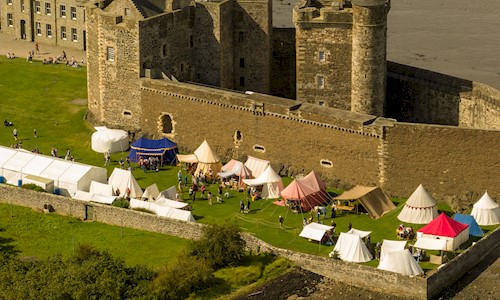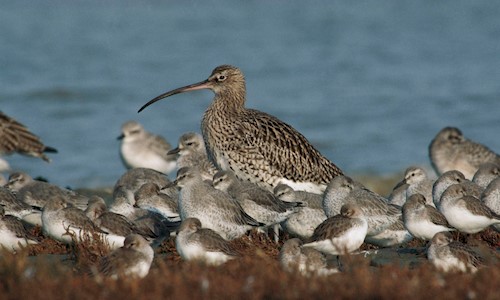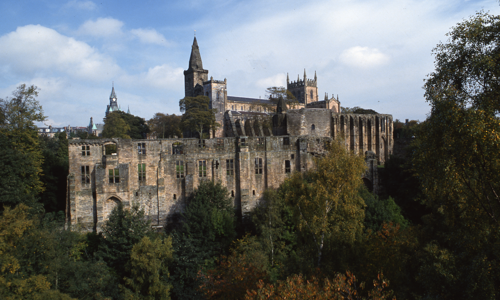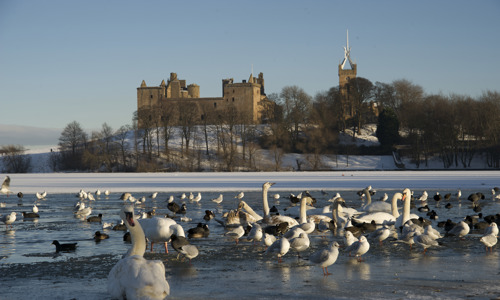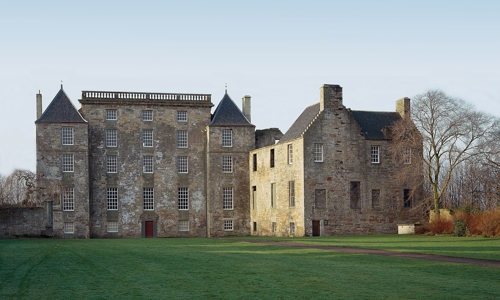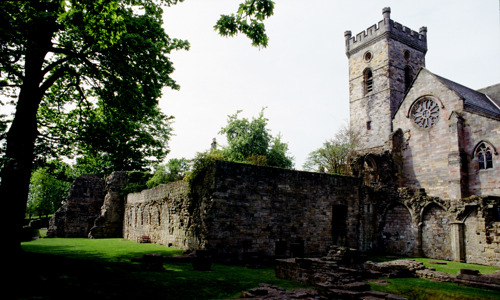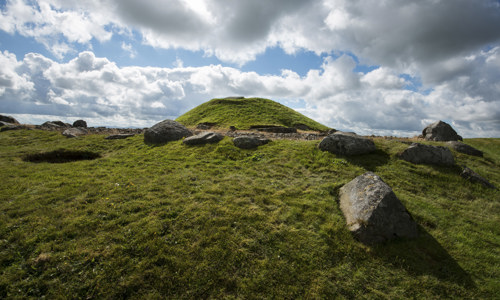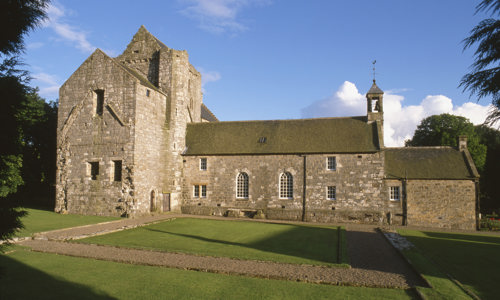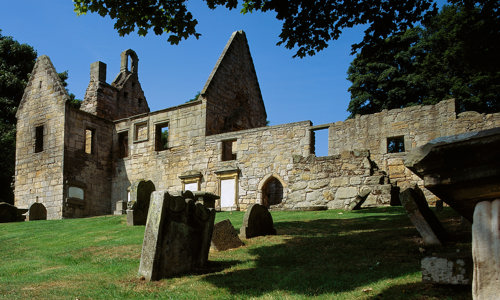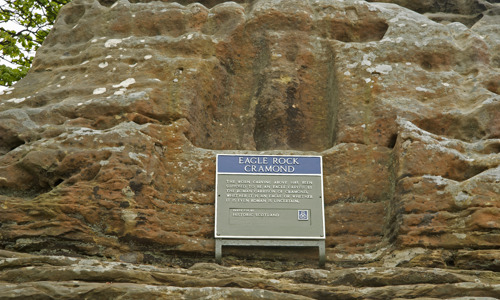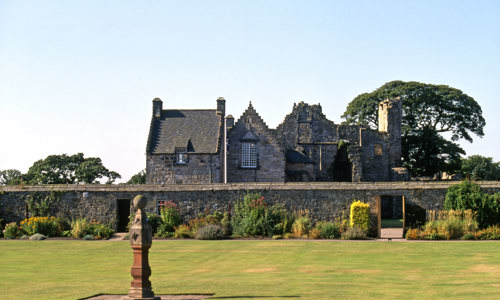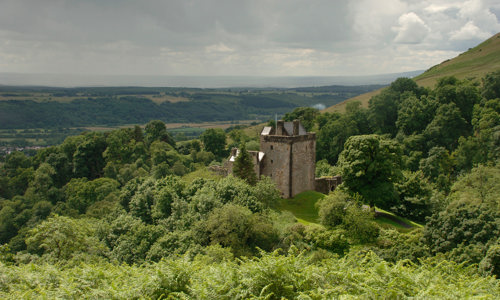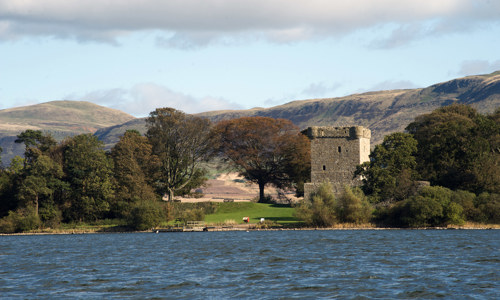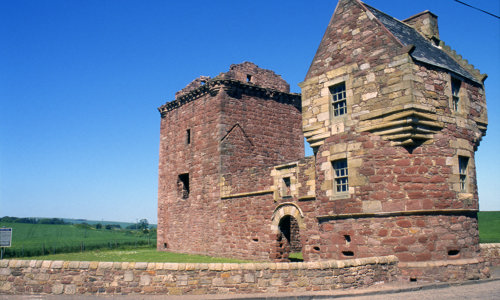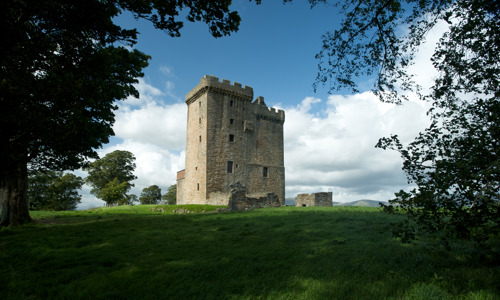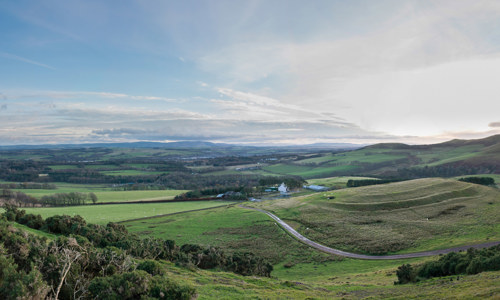History
Blackness Castle stands by the Firth of Forth, at the port that served the royal burgh of Linlithgow in medieval times. Though built in the 15th century as a lordly residence for the Crichtons, one of Scotland’s more powerful families, it soon took on other roles.
Blackness went on to become:
- a royal castle, in 1453
- a garrison fortress
- a state prison
- an ammunition depot, in the later 19th century
The castle was decommissioned after the First World War and passed into state care as a visitor attraction.
The ship that never sailed
Blackness is often called ‘the ship that never sailed’. From the seaward side it looks just like a great stone ship run aground.
Its pointed stem projects into the water, while the square stern stands beached on dry land.
The castle’s three towers add to the effect:
- the small ‘stem’ tower at the prow
- its tall, central ‘main mast’ tower
- the solid ‘stern’ tower at the rear
A formidable artillery fortification
In 1537, James V began to convert the castle into a state prison and artillery fortification. His ambitious project was driven by the looming threat from Henry VIII’s Protestant England. Work completed in 1542, just before the Wars of the Rough Wooing.
Mighty Blackness wasn’t subtle like the great Italianate artillery fortifications. Instead, enemies approaching from the land met with a brute mass of masonry (the ‘stern’ tower) and cannons fired through great gunholes positioned to give all-round firepower.
The vastly strengthened castle withstood various sieges, until in 1650 Oliver Cromwell’s heavy guns devastated the defences, forcing the garrison to surrender. The scars remain today.
A state prison
Blackness was intended to provide a suitable residence for a nobleman. But its chief use was as a garrison stronghold and a state prison on behalf of the reigning sovereign.
Many high status prisoners were held here in later medieval times. The most famous was Cardinal David Beaton, Archbishop of St Andrews, in 1543. Beaton was for a long time one of the main rivals of the Earl of Arran, who was Regent of Scotland when Mary Queen of Scots was an infant.
In the ‘Killing Time’ of the 1670s and 1680s, Charles II and James VII imprisoned many Covenanters here. In the later 1700s, Blackness was a prison of war for foreign sailors and soldiers captured during the wars with France, Spain and the fledgling USA.
Natural history
The foreshore and mudflats to the east of the castle are part of the River Forth Site of Special Scientific Interest. This protected wildlife site is an important feeding area for overwintering birds.
Glasswort, a rare plant, also grows on the foreshore. Its fleshy leaves were picked as a vegetable, but it gets its name from its other historic use, in the making of soap and glass.

